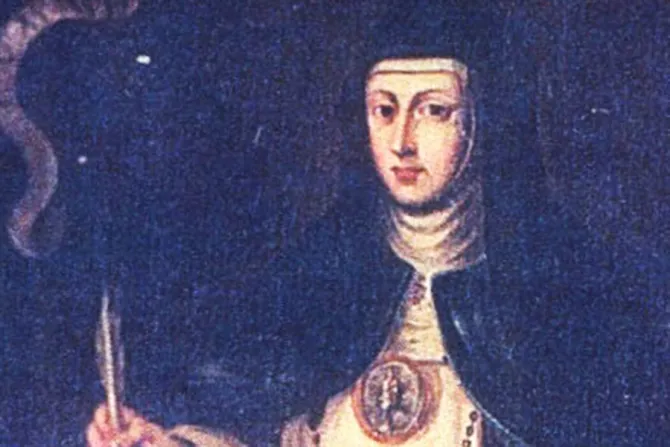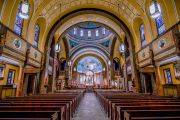She earned the name "Lady in Blue" because the Jumano natives reportedly saw a woman wearing a blue cape. Sr. Maria belonged to a Franciscan order of nuns called the Conceptionistas, who wear a white habit with a blue cloak. The order still has convents in Spain and Latin America today, including Sr. Maria's convent in Agreda.
From her cloister, having never traveled to the New World, Sr. Maria was able to describe the new plants and animals there, as well as the way the people dressed and painted themselves. She described the landscape as a place where two rivers meet – and in San Angelo, the Middle Concho River is joined by the South Concho River.
Especially remarkable, Bishop Sis said, is that she described meeting a leader with one eye, while the Franciscan missionaries in the area at the time also reported meeting a Jumano leader with one good eye and one bad eye.
"So that's a fascinating detail, that shows a concrete connection between this place and her descriptions of the people," he said.
According to the Texas Almanac, Friar Alonso de Benavides of the Franciscans in New Mexico was the first to confirm the story of the "Lady in Blue." He reported the incidents of her appearances to the Spanish court in 1630, and shortly thereafter was able to interview Sr. Maria de Agreda at her convent, where he was able to cross-reference the details of the apparitions from both Sr. Maria and the Jumano natives' perspective.
"The first time she went was in the year 1620. She had continued ever since ... She gave me all their signs and (declared) she had been with them," the friar wrote at the times.
"She knows Captain Tuerto (the one-eyed captain) very well, having given me his personal characteristics and that of all the others. She herself sent the messengers from Quivira (the Jumano village on the Plains) to call the missionaries."
Reportedly, the bi-locations of Sr. Maria de Agreda ceased after her goal was accomplished – that the Jumano native people were able to receive the sacraments.
If Sr. Maria de Agreda truly bi-located, it wouldn't be the only time this phenomenon was reported.
While it's more common to have Jesus or Mary or saints in heaven appear to people in apparitions, several saints have reportedly bi-located while they were still alive on earth.
Perhaps one of the best-known bi-locating saints in recent times is St. Padre Pio, a mystical Capuchin priest who reportedly appeared to numerous people throughout the world while he was living in Italy.
(Story continues below)
Subscribe to our daily newsletter
During World War II, numerous American pilots said that a mysterious friar would appear to them in the air over San Giovanni Rotondo, which was occupied by Nazis at the time. When the American pilots would try to bomb the Rotondo, the friar would appear and stretch out his hands, and their bombs would drop on open plains nearby.
After the war, a pilot visited the friary and immediately recognized Padre Pio as the one who had appeared to them over the city.
Questioned about the strange incidents of his bi-location, Padre Pio once said that they simply occurred "by an extension of his personality."
Unlike apparitions of Mary or Jesus, which the Vatican heavily investigates, instances of bi-locations or apparitions of saints are typically not formally investigated by the Vatican, said Michael O'Neill, a Catholic miracle researcher who recently published a book on miraculous apparitions in the Church.
O'Neill said that apparitions or bi-locations of saints simply "adds to the story of the saint, their reputation of holiness, and the devotion that arises around a saint," O'Neill said.
Those stories can be a part of establishing a saint's reputation for holiness, and in Sr. Maria's case "to show that there's a great devotion to her even outside of Spain," he said.




